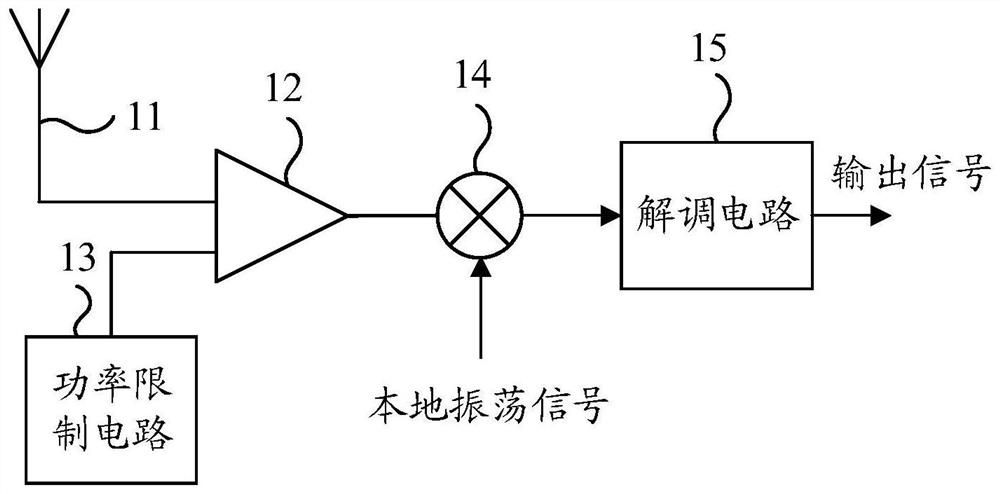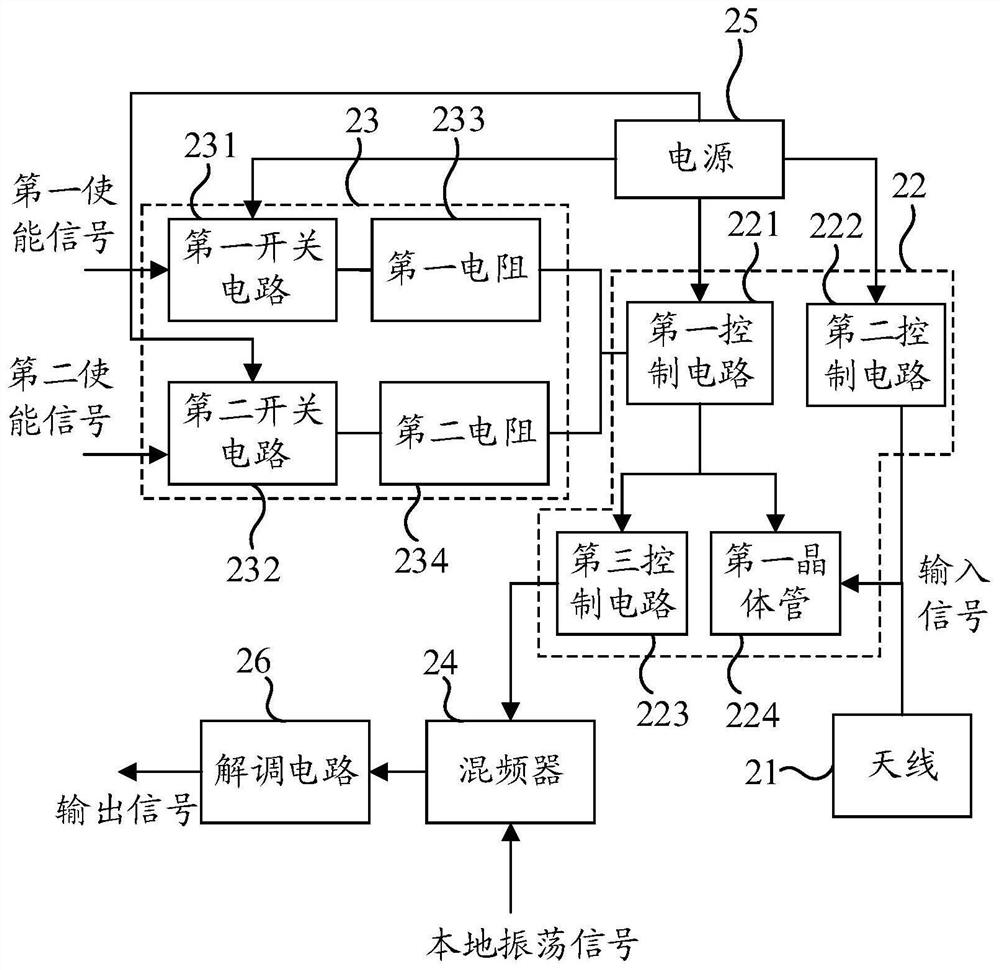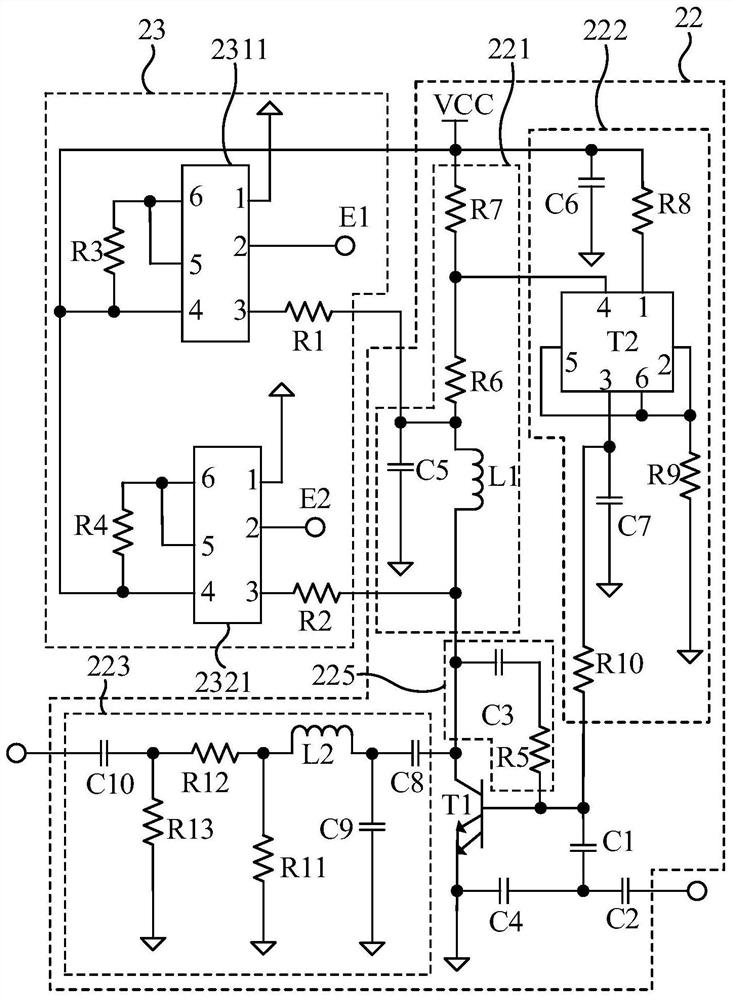Zero-intermediate-frequency receiver and communication equipment
A zero-IF receiver and radio frequency signal technology, applied in the field of communication, can solve the problems of increasing useful signal bandwidth, deteriorating sensitivity, small, and needing the ear to be close to the speaker to hear, etc., to avoid noise and improve reception quality.
- Summary
- Abstract
- Description
- Claims
- Application Information
AI Technical Summary
Problems solved by technology
Method used
Image
Examples
Embodiment Construction
[0014] The following will clearly and completely describe the technical solutions in the embodiments of the present application with reference to the drawings in the embodiments of the present application. Obviously, the described embodiments are only some of the embodiments of the present application, not all of them. Based on the embodiments in this application, all other embodiments obtained by persons of ordinary skill in the art without making creative efforts belong to the scope of protection of this application.
[0015] refer to figure 1 , figure 1 It is a structural diagram of an embodiment of a zero-IF receiver provided in the present application, and the zero-IF receiver includes: an antenna 11 , a low-noise amplifier 12 and a power limiting circuit 13 .
[0016] Antenna 11 is used for receiving the radio frequency signal that transmitter (not shown in the figure) transmits, and this radio frequency signal is the signal after modulation; Low noise amplifier 12 is c...
PUM
 Login to View More
Login to View More Abstract
Description
Claims
Application Information
 Login to View More
Login to View More - R&D
- Intellectual Property
- Life Sciences
- Materials
- Tech Scout
- Unparalleled Data Quality
- Higher Quality Content
- 60% Fewer Hallucinations
Browse by: Latest US Patents, China's latest patents, Technical Efficacy Thesaurus, Application Domain, Technology Topic, Popular Technical Reports.
© 2025 PatSnap. All rights reserved.Legal|Privacy policy|Modern Slavery Act Transparency Statement|Sitemap|About US| Contact US: help@patsnap.com



